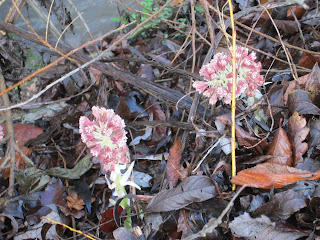Good to see that the ‘Wherry has broken’, as the older valley residents had it, and the South Winterborne is now in full flow in all its branches, including the mill leat, washing pool, the water meadow sluices and the gap at West End (which could be a relic of the Doomsday Book watermill) and which has been the subject of much discussion in the village recently . The bourne or borne ( or burn in Scotland) in the name comes from the Old English word for a stream or brook. First used in c1396 by W. Longland in ‘Piers Plowman’ , perhaps the most succinct definition is given by the Wiltshire writer Richard Jefferies.
1879 R. Jefferies Wild Life 22 The villages on the downs are generally on a bourne, or winter water-course..In summer it is a broad winding trench..along whose bed you may stroll dryshod..In winter, the bourne often has the appearance of a broad brook.
There is sometimes puzzlement as to how the plants and animals that live in the stream survive the dry periods; the answer is that only species that are capable of dealing with the dry spell exist in the river in some form or other, such as eggs for the minnows, seeds for the plants, and eggs or larvae for the insects. The birds just fly somewhere else.
The
natural ebb and flow of the upper reaches of the stream has , in
recent years, been disturbed by Wessex Water being required to put
compensation water into the stream as part of their allowable
extraction rate, so hiding
its winter borne nature. As with many other things climate change will inevitably have some effect on the aquifer which supplies the stream, perhaps leading to more extreme changes in the flow.
